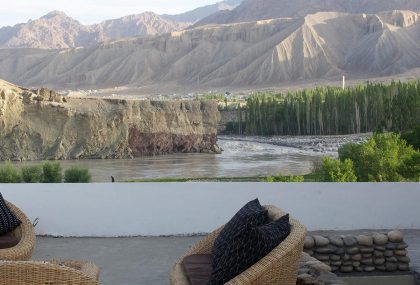Off the beaten track (a top travel blogger shows you how)
Abigail King
Writer for National Geographic Travel, Lonely Planet, BBC, and travel bloggerWhat it means to really go off the beaten track, from a serial adventurer who shares her tips for achieving unique experiences and thoughtful travel
I love those quiet, secret moments, when what you thought you knew about a place changes in a flicker, and you look up from what you’re doing and realise that, for all the right reasons, you are somewhere that the crowds are not.
In Venice, I experienced it on the empty bridges that looped across canals into the music-soaked Jewish Quarter. In Sydney, it was when I discovered archaeological remains within a whisper of the city’s famed Opera House. In Buenos Aires, I snatched a moment when I found myself in what was evidently the shop window dummy quarter, as smartly dressed professionals strode past with mannequins beneath their arms.
In Europe, it’s relatively straightforward to escape the crowds. However congested London, Paris or Rome may be, their centuries of history and compact layout, dating from the days when we all rode down narrow streets on horseback, make it easy to find the unusual. Walk left instead of right, seek out parks and old graveyards, and keep your eyes peeled for those blue plaques that highlight the almost-but-not-quite-famous heritage trails.
I was slow to grasp, therefore, that on other continents, a different approach is required. Newer cities, or those forced to build again after the wrecking ball of war, have larger arteries and more complex veins. Wandering off to get away from the crowds can leave you lost, in trouble, or (more likely) somewhere the crowds don’t go because there just isn’t much to see.
In Miami, Los Angeles, JoBurg and Rio, the sprawling urban layout means you’ll spend less time walking, and more exploring from behind the wheel of car. The standardised buildings of Tokyo and Toronto mean you need to work harder and travel further to discover the unique and city-specific.
So keep a watchful eye out for window displays and people walking in and out of unmarked doors: it’s all the rage in areas of renovated urban cool not to put a sign on your art gallery, designer boutique, hotel or nightclub. Hop off at a random spot on the metro systems and look out for maps that point out places of interest nearby. Ditch the tourist cruises and climb aboard the commuter ferries, or drive alongside rivers or coastlines to give some purpose to your wanderings. Just keep your common sense with you at all times and take heed of any local safety warnings.
As ever, you can’t beat getting to know the locals and I’m lucky in that respect; I have a network of like-minded colleagues spread around the globe. But what can you do if you’re not in the travel writing business? Turn to Twitter and the realm of social media. Try apps like Spotted by Locals (to find hidden Soviet art in Bulgaria) or Beach Thursday (did you know there are beaches in Hong Kong?). A whole conglomeration of travel enthusiasts wait with personalised tips at Gogobot.com. You could even try reading some blogs (in my time I’ve written about sleeping above a bakery in London, the razor gang bars in Sydney, the Berlin Wall in Vienna and the Currywurst Museum in Berlin).
Finally, never underestimate the strength of your instincts. The decision that led me to hike the Dragon’s Back in Hong Kong, on a spongy earth-red track that overlooked the sea. That early morning stroll in Bogota that revealed the watchful snow-tinged mountain. Even that moment of solitude at Table Mountain, one of Africa’s best-known sights – all came from instinct and a reluctance to simply follow the crowd.
Well, that and a warm coat. You have to be dressed for urban adventure after all.




